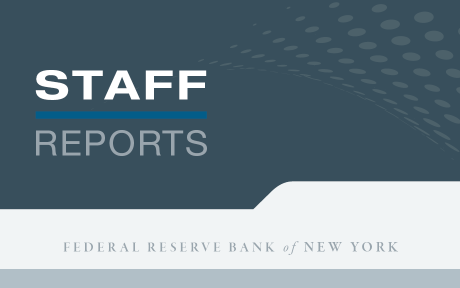
Firms’ access to credit is a crucial determinant of their investment, employment, and overall growth decisions. While we usually think of their ability to borrow as determined by aggregate credit conditions, in reality firms have a number of markets where they can borrow, and conditions can vary across those markets. In this post, we investigate how the composition of debt instruments on U.S. firms’ balance sheets has evolved over the last twenty years.
A look at broader market conditions helps set the stage for this analysis. The panel chart below compares banks’ lending standards to how much firms issue in the corporate bond market (left panel) and at what price (right panel). Together they illustrate that credit conditions in the corporate bond market can be disconnected from those in the bank loan market.
Conditions in the Bond Market Are Not Always in Line with Bank Lending Standards
Ratio
Percent
Percent
Percent
Bond market conditions seem to react more quickly to both a deteriorating outlook (as in, for example, 2008) and to an anticipated loosening of monetary policy (as in the fourth quarter of 2023). This suggests that the credit cycle of firms borrowing primarily through bank loans may be asynchronous to the credit cycle of firms borrowing from public debt markets. Thus, which credit market conditions are salient for firms’ real decisions may change over time and across firms as the composition of credit changes.
Fraction of Credit Intermediated through Banks Is Increasing over Time
To understand the composition of firms’ liabilities over time, we use the Capital IQ Debt Capital Structure data, which collects information on firms’ liabilities at the instrument level from financial statements. In a recent staff report, we describe in detail the coverage and characteristics of this dataset and the data construction process. For each firm, in a given year, we compute the share of credit intermediated by banks as the ratio of loans outstanding to loans and bonds outstanding. The next chart plots the average fraction of bank-intermediated credit across nonfinancial U.S. firms in the Capital IQ database and shows that, on average, the share of intermediated credit has increased over time.
Share of Intermediated Credit Is Increasing for the Average Firm
Percent
The increase on average in the share of bank-intermediated credit may seem puzzling given the well-documented expansion in the size of the corporate bond market over the same period. However, as the next chart shows, for firms that have both loans and bonds outstanding at a given point in time, the share of intermediated credit has declined by approximately 8 percent over the last twenty years. This fact suggests that the upward trend in the overall share of intermediated credit is driven by an increasing number of firms borrowing exclusively from banks. Instead, firms that have access to both intermediated credit and debt markets seem to be increasingly relying on public debt markets.
Share of Intermediated Credit Is Falling for Firms with Access to Both Bank Loans and Corporate Bonds
Percent
Is this trend similar for firms of all sizes? The next chart shows that the trend is driven by firms in the bottom 75th percentile of the size distribution. While the share of intermediated credit for the top 25th percentile of firms has stayed relatively constant (at around 30 percent), the share of loans has decreased considerably for the rest of the firms (from around 60 percent to 50 percent). That is, smaller firms that have access to both bond and loan markets are increasingly relying more on bond financing.
The Downward Trend in Intermediated Credit Is Driven by Smaller Firms
Percent
Notes: Large firms are those in the top 25th percentile of the size distribution. Small firms are those in the bottom 75th percentile.
The previous chart also shows that the share of intermediated credit is cyclical. Large firms that have access to both bond and loan markets are able to substitute into a greater share of borrowing through bank loans in periods when bond market issuance slows down.
Corporate Bond Maturities Continue to Shorten
Firms are particularly exposed to credit market conditions when they have to refinance existing debt as, for example, explored in a recent paper on the real effects of firm rollover risk. Thus, the maturity composition of firms’ liabilities plays a crucial role in determining the extent to which current conditions pass through to firms’ financing costs. The next chart shows that the weighted-average maturity of corporate bonds outstanding has decreased almost monotonically over the last twenty years, from about eleven years in 2002 to slightly lower than 8.5 years in 2022. In contrast, while the average maturities of bank loans were increasing prior to the global financial crisis (GFC), peaking at more than six years average maturity in the 2009–11 period, they have sharply decreased since then, reaching an average maturity of four years in 2022.
The Bond Weighted-Average Maturity Shows a Decline over Time; Loan Weighted-Average Maturity Peaked after the GFC
Years
Note: GFC is global financial crisis.
Are these differences driven by changes in the composition of borrowers in each market? The next chart plots the gap between the weighted-average maturity of bonds and loans for an average firm with both bonds and loans outstanding. We see that, pre-GFC, the gap between bond and loan maturities declined substantially, dropping to just above two years in the 2010–13 period, driven both by the decline in bond average maturity and the increase in loan average maturity reported above. Since 2013, however, the gap has stabilized at around three years, so that the average maturity of a firm’s corporate bonds remains about twice as long as the average maturity of the same firm’s loans.
The Maturity Gap between Bonds and Loans of the Same Firm Has Fallen over Time
Years
Why Does the Composition of Debt Matter?
Put together, the three charts above show that firms that can borrow through both bank loans and corporate bonds are increasingly borrowing a greater fraction of debt through corporate bonds and that the maturity of those bonds has shortened dramatically since 2002, both in an absolute sense and relative to the maturity of loans the same firms have outstanding. Thus, firms are relying increasingly more on the corporate bond market as a source of funding and are accessing the corporate bond market more frequently, as existing corporate bonds mature more frequently. For these firms, credit conditions in the corporate bond market are an increasingly salient factor that affects directly their ability to finance themselves.
While the discussion until now has focused on firms’ financing decisions from the perspective of each firm, overall access to credit has broad macroeconomic consequences. In another staff report, we argue that firms’ debt structure decisions, combined with the composition of the financial sector, drive the transmission of monetary policy and other macroeconomic shocks. Thus, understanding the landscape of corporate borrowing at a granular level is fundamental to understanding how financial frictions affect the overall economy.

Nina Boyarchenko is the head of Macrofinance Studies in the Federal Reserve Bank of New York’s Research and Statistics Group.

Leonardo Elias is a financial research economist in Macrofinance Studies in the Federal Reserve Bank of New York’s Research and Statistics Group.
How to cite this post:
Nina Boyarchenko and Leonardo Elias, “The Changing Landscape of Corporate Credit,” Federal Reserve Bank of New York Liberty Street Economics, May 21, 2024, https://libertystreeteconomics.newyorkfed.org/2024/05/the-changing-landscape-of-corporate-credit/
BibTeX: View |
Disclaimer
The views expressed in this post are those of the author(s) and do not necessarily reflect the position of the Federal Reserve Bank of New York or the Federal Reserve System. Any errors or omissions are the responsibility of the author(s).











 RSS Feed
RSS Feed Follow Liberty Street Economics
Follow Liberty Street Economics